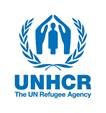Standardised Expanded Nutrition Survey 2019
Refugee Camps and Host Villages in South Chad and the Lac Region
Chad, 2018 - 2019
Get MicrodataIdentification
TCD_2019_SENS_v01_M
Standardised Expanded Nutrition Survey 2019
Refugee Camps and Host Villages in South Chad and the Lac Region
| Name | Country code |
|---|---|
| Chad | TCD |
Other Household Survey [hh/oth]
This survey includes three modules: food & security (3233 observations), women's nutrition and health (3850 observations) and children's nutrition and health (6920 observations).
Sample survey data [ssd]
Households, children (0-59 months) and women (15-49 years)
Version
Version 2.1: Edited and anonimized datataset.
Scope
The Chad SENS 2019 includes:
- Households: food security
- Women: anemia
- Children: anemia, anthropometry, infant and young child feeding (IYCF)
| Topic |
|---|
| Health and Nutrition |
| Health |
| Food security |
Coverage
Refugee sites of: Amboko, Belom, Dar Es Salam, Doholo, Dosseye, Gondje and Moyo Host villages: Belom, Dar Es Salam, Gore, Moyo
Households, and children (0-59 months) and women (15-49 years) within the households
Producers and sponsors
| Name | Affiliation |
|---|---|
| United Nations High Commissioner for Refugees | UN |
| Name |
|---|
| WFP |
| ADES |
| IRC |
Sampling
The type of sampling chosen for this cross-sectional survey is the two-stage cluster sampling because of the geographic and demographic size of the surveyed camps. The first step corresponds to the choice of clusters and the second to the one of households.
For the first step, the selection of the clusters was made from the figures available by zone or block using the software ENA for SMART, version 2011 (July 2015). The software has been set up so that this selection is done according to the probability proportional to size
method for each zone to ensure that each household has the same chance of being investigated within the camp, whether it is part of a large or small area.
For the second step, the households in each cluster to be surveyed will be selected by the team leaders using a systematic draw (calculation of a probing step) according to the size of each zone.
The chosen methodology is based on the UNHCR-SENS guidelines whose sampling rules are themselves derived from the SMART methodology.
Sample weights for the household data were computed as the inverse of the probability of selection of the household, computed at the sampling domain level (camp)
Survey instrument
The Child's module of the household questionnaire was administered in each household while the modules on food security and women's nutrition and health were only administered to the odd numbered housholds.
Data collection
| Start | End |
|---|---|
| 2018-12-18 | 2019-02-15 |
- Computer Assisted Personal Interview [capi]
| Name | Affiliation |
|---|---|
| United Nations High Commissioner for Refugees | UN |
| World Food Program | UN |
| Direction National de Nutrition et de Technologie Alimentaire | |
| Health Districts | |
| Agence de Développement Économique et Social | |
| International Rescue Committe |
Data processing
Raw data was edited lightly, e.g. recoding of non-excisting values of a list recoded to missing. Variable and values are labelled. Data was cleaned and anonymized with the use of recording and local supression. For identification purposes, some variables were removed form the dataset.
Contacts
| Name | Affiliation | |
|---|---|---|
| Curation Team | UNHCR | microdata@unhcr.org |
Metadata production
DDI_TCD_2019_SENS_v01_M
| Name | Affiliation | Role |
|---|---|---|
| UN Refugee Agency | UN | Metadata producer |
| Development Economics Data Group | The World Bank | Metadata adapted for World Bank Microdata Library |
2022-12-22
Metadata version
Version 01 (December 2022): This metadata was downloaded from the UNHCR catalog (https://microdata.unhcr.org/index.php/home) and it is identical to UNHCR version (UNHCR_SENS_TCD_2019_v1). The following two metadata fields were edited - Document ID and Survey ID.
